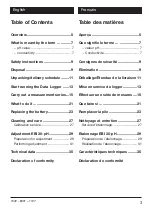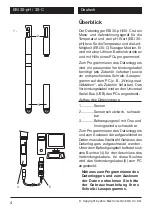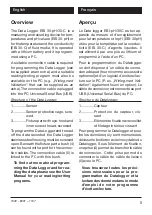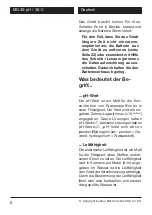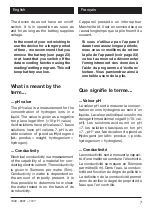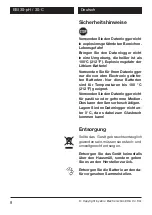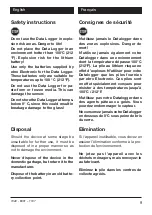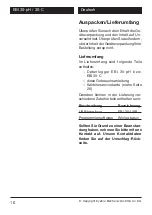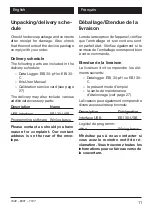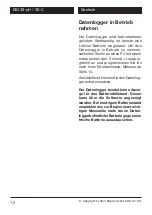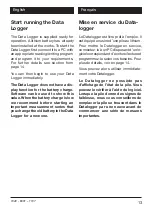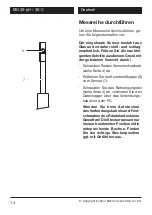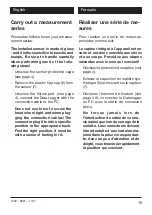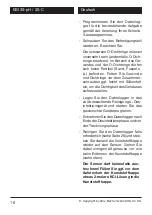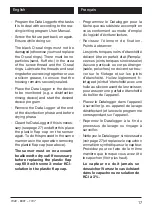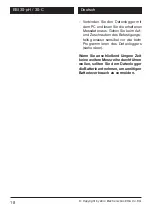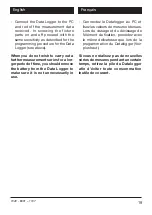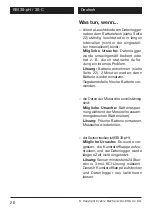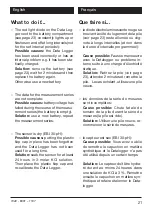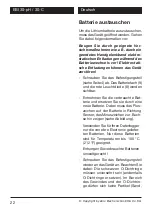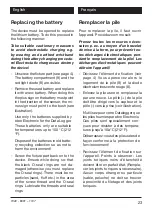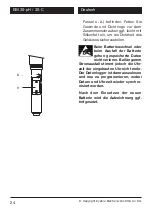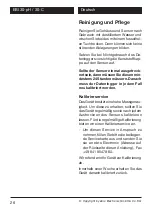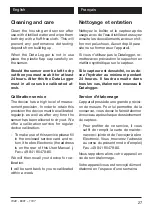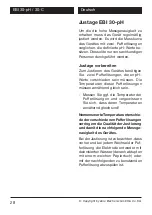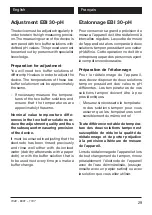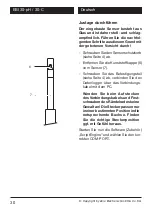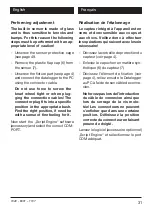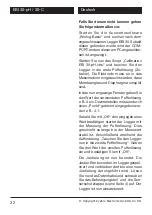
17
English
Français
1340 - 6301 – 1107
- Program the Data Logger for the tasks
it is to deal with according to the rea-
ding/writing program User Manual.
- Screw
the
fi
xture part back on again.
Ensure while doing so:
The black O-seal rings must not be
damaged (otherwise you must replace
the O-seal rings). There must be no
particles (sand,
fl
uff etc.) in the area
of the screw thread and the O-seal
rings. Lubricate the threads and seal
rings before screwing together or use
a silicon grease, to ensure that the
housing remains securely sealed.
- Place the Data Logger in the device
to be monitored (e.g. a disinfection
rinsing device) and start the desired
device program.
- Remove the Data Logger at the end
of the disinfection phase and before
drying phase.
- Clean the Data Logger if this is neces-
sary (see page 27) and after this place
the plastic
fl
ap cap on the sensor
again. To do this proceed in the same
manner as in the operation removing
the plastic
fl
ap cap (see above).
The sensor must on no account
be allowed to dry out! If necessary
before replacing the plastic fl ap
cap fi ll it with some 3-molar KCl-
solution in the plastic fl ap cap.
- Programmez le Datalogger pour la
tâche que vous désirez accomplir en
vous conformant au mode d’emploi
du logiciel d’écriture/lecture.
- Revissez l’élement de fixation.
Points à observer:
Les joints toriques noirs d’étanchéité
doivent être en parfait état (Rempla-
cez ces joints toriques si nécessaire)
Aucune particule ou corps étranger
(sable, peluches) ne doivent se trou-
ver sur le
fi
letage et sur les joints
d’étanchéité. Huilez légèrement
fi
-
letage et joints d’étanchéité avec une
huile au silicone avant de les revisser,
pour assurer une parfaite étanchéité
du boîtier de l’appareil.
- Placez le Datalogger dans l’appareil
à surveiller (p. ex. appareil de lavage
désinfectant) et lancez le programme
correspondant sur l’appareil.
- Reprenez le Datalogger à la
fi
n du
processus de lavage ou rinçage à
surveiller.
- Nettoyez le Datalogger si nécessaire
(voir page 27) et replacez le capuchon
en matière synthétique sur le capteur.
Procédez pour ce faire de la même
manière que lorsque vous avez ôté
le capuchon (Voir plus haut).
Le capteur ne doit jamais se
dessécher! Versez le cas échéant
dans le capuchon une solution de
KCl à 3%.

